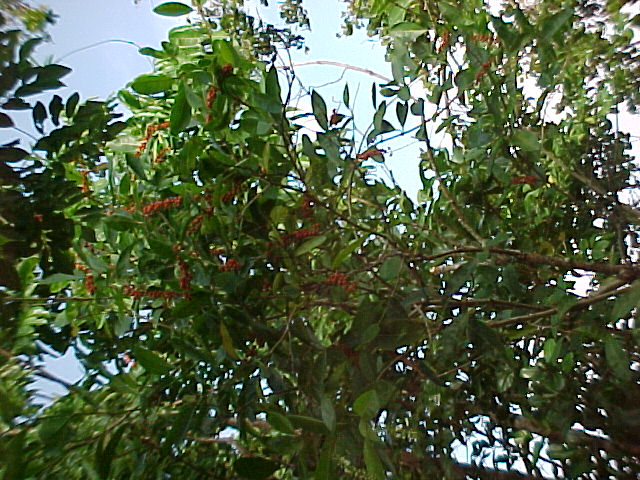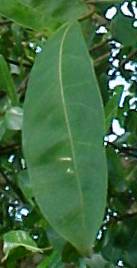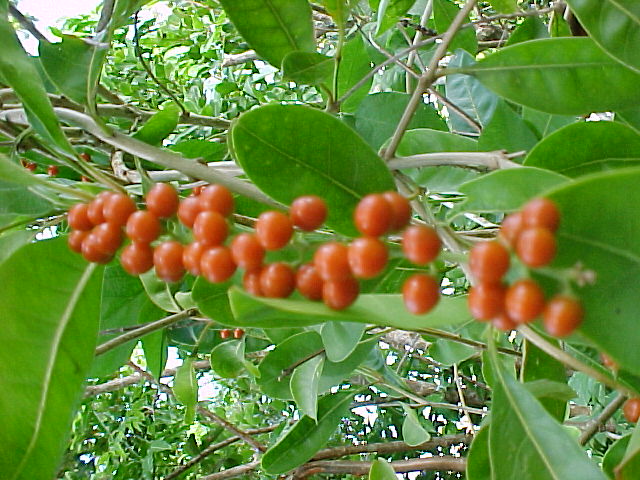Tree or bush of elongated cup-shape, 4-18 m high; branches generally tetragonal, sometimes cylindrical and ridged, glabrous or hairy on nodes; leaves with petiole 5-30 mm long, glabrous, glandulous at apex; leaf-surface generally papery or almost coriaceous, with 1-3 pairs of glands near base, orbicular, oval, oblong, lanceolate-elliptic, lanceolate, or linear-lanceolate, 4-20 cm long, 1-6 cm wide, glabrous on upperside, glabrous or with variable pubescence on underside, dark green on both sides or slightly brighter or rusty on underside, obtusely pointed or emarginate; margin slightly revolute, normally entire; racemes generally terminal, with others axillary, lax, with many flowers; flowers spreading, fragrant; calyx pallid green, 2-4 mm long, glabrous on outside; corolla white, white-yellow, or white-red; drupe oblong, 6-10 mm long, initially yellow-orange, black when mature.
Common names: canilla de venado, collarete, guairo santo, guayo blanco, mangle de sabana, palo guitarra, penda, roble amarillo, roble de olor, sangre de doncella.


